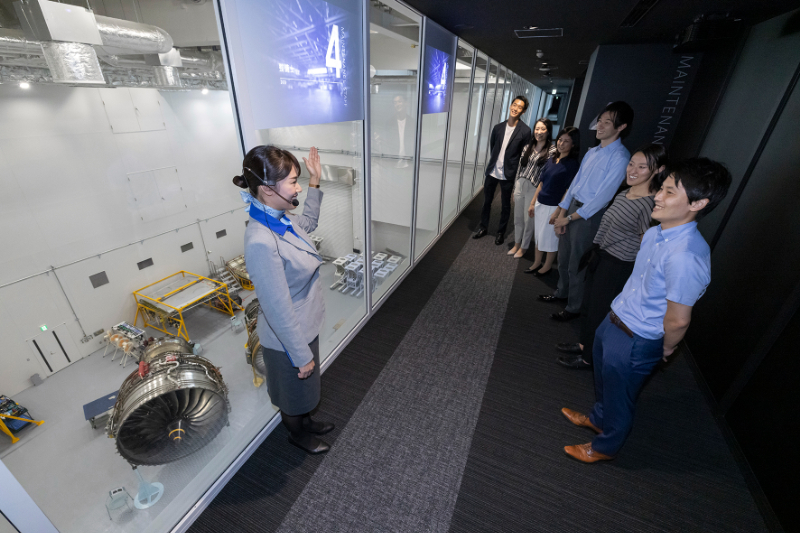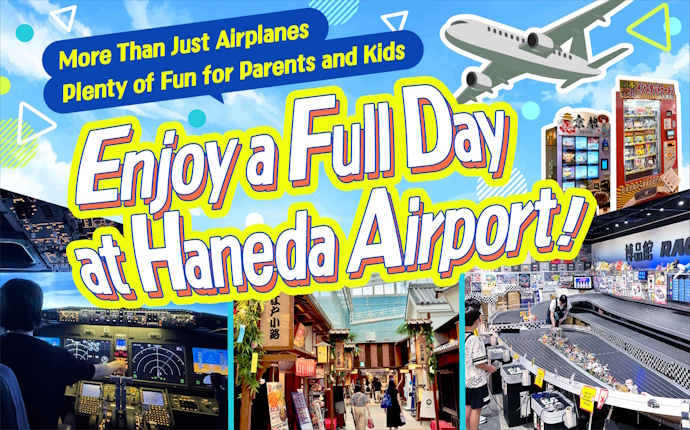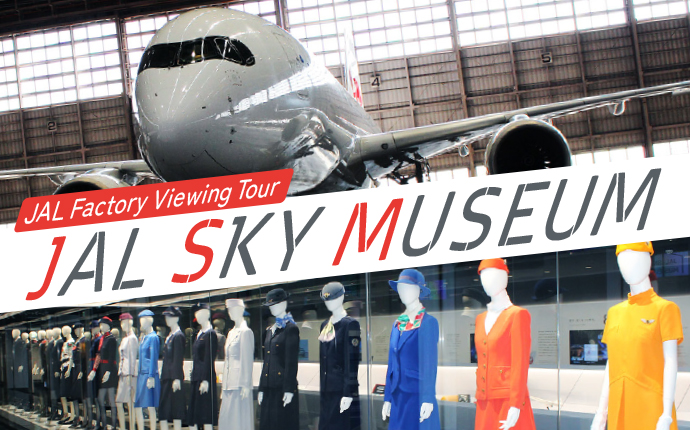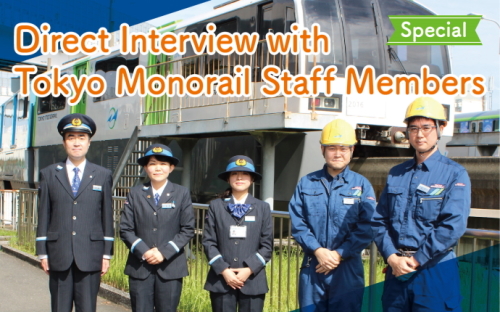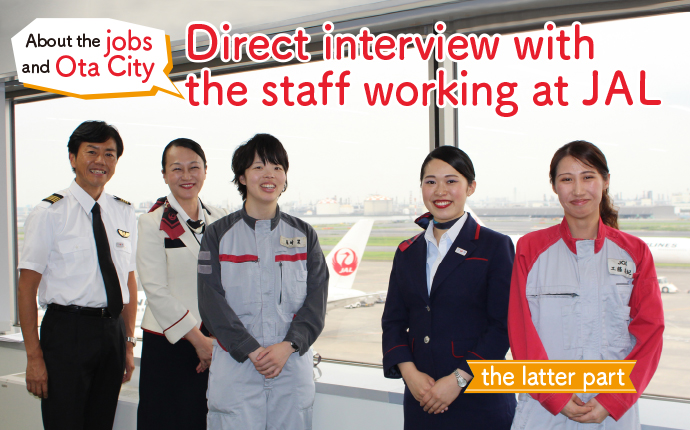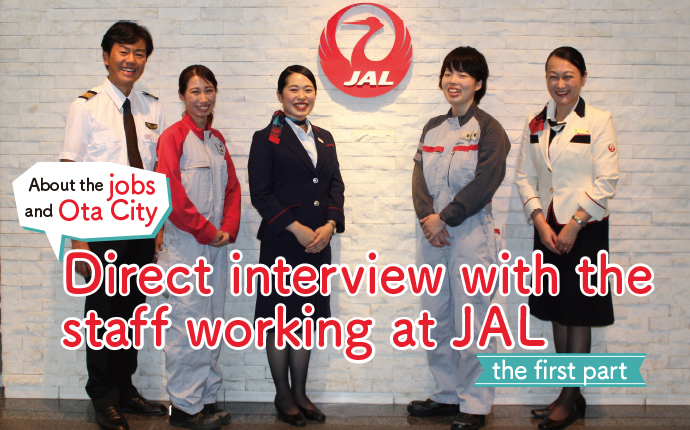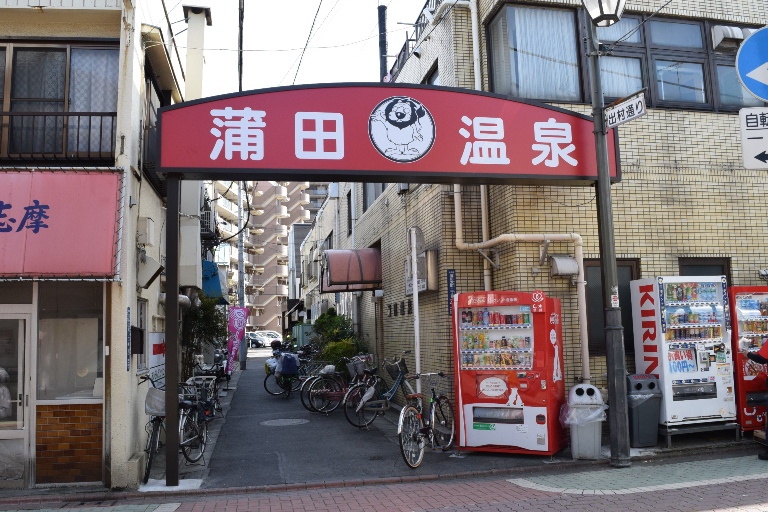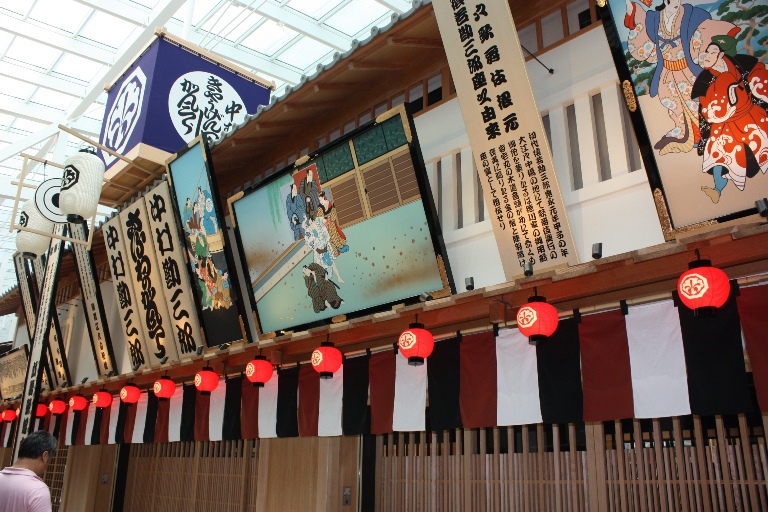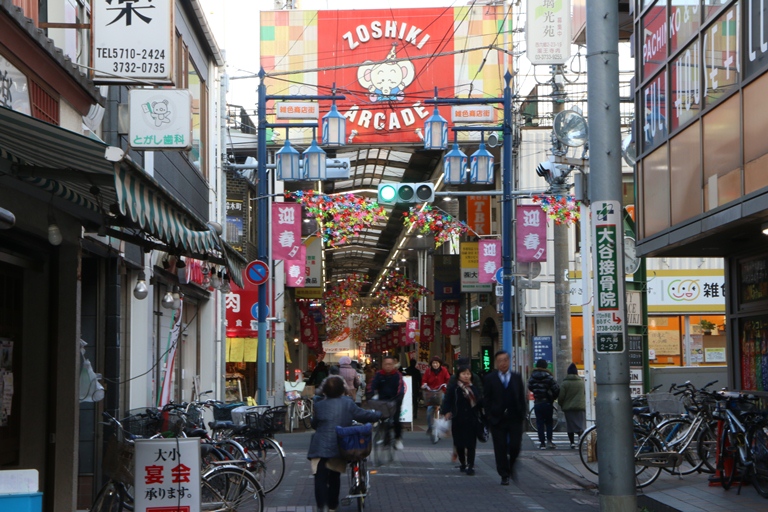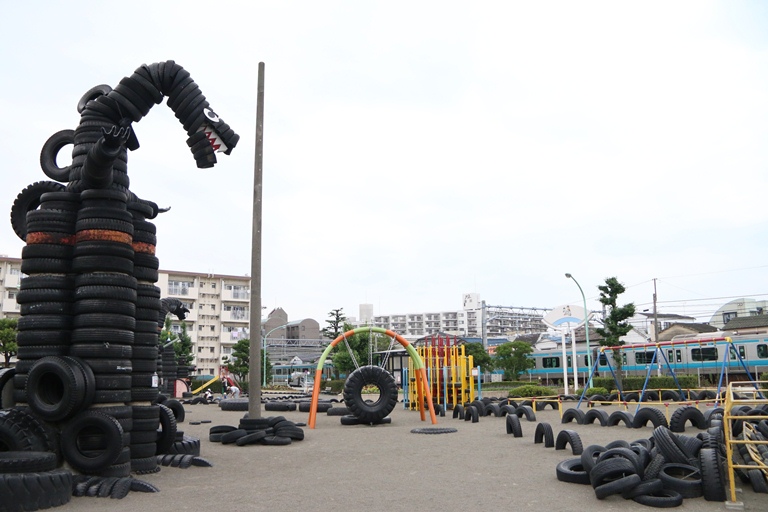What is ANA Blue Base?
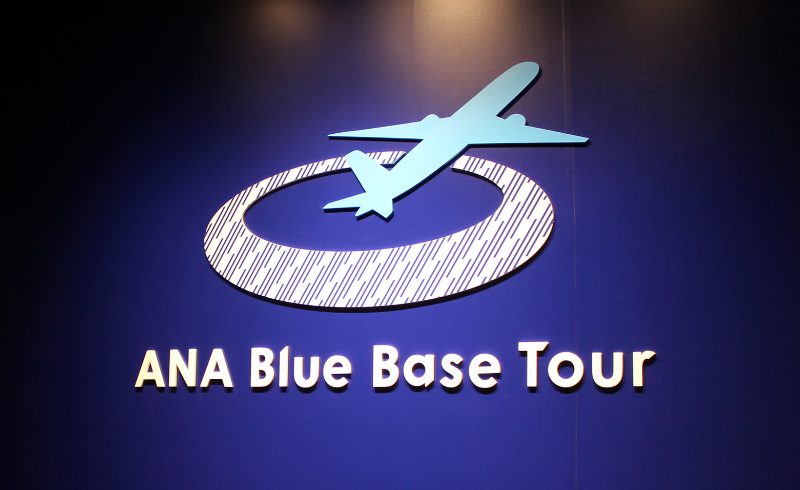 The ellipse of the ANA Blue Base Tour logo symbolizes the power of all ANA Group employees, and the silhouette of the airplane with its nose raised represents the idea to “takeoff towards the future.”
The ellipse of the ANA Blue Base Tour logo symbolizes the power of all ANA Group employees, and the silhouette of the airplane with its nose raised represents the idea to “takeoff towards the future.”
The ANA Blue Base (ABB) is a training facility located near Haneda Airport, which is about a 7-minute walk from Anamori-inari Station on the Keikyu Airport Line. This is one of the largest facilities in Japan with a site area of over 30,000㎡, integrating the training and educational functions of the ANA Group, which were previously scattered around Haneda Airport, into a single location.
Blue is ANA’s official corporate color scheme, and Base means that this facility is the “starting point of the ANA brand, the origin of all ANA Group employees, and the foundation that supports employees.”
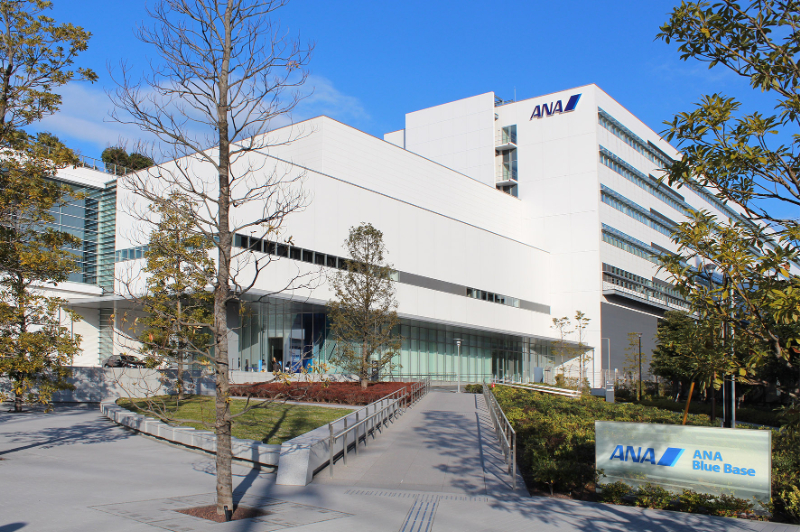 The exterior of the ABB has a great sense of depth from the entrance. What does the inside look like?
The exterior of the ABB has a great sense of depth from the entrance. What does the inside look like?
Our expectations are so high!
There are three major highlights to the ABB tour.
1. The cutting-edge training equipment
This is Japan’s first cabin crew training facility that introduced equipment that can realistically reproduce the shaking of an airplane!
2. Enjoy watching the authentic training
While listening to the explanation of the navigator (an active employee), you can see the actual training taking place from the dedicated viewing area on the third floor of the building!
(Training may not always be available for viewing.)
3. Feel the real thing
You can touch real business class seats, airplane tires, a mock cockpit used for training, and even take a photo!
Now, let’s go experience the tour for ourselves!
On to the ABB now!
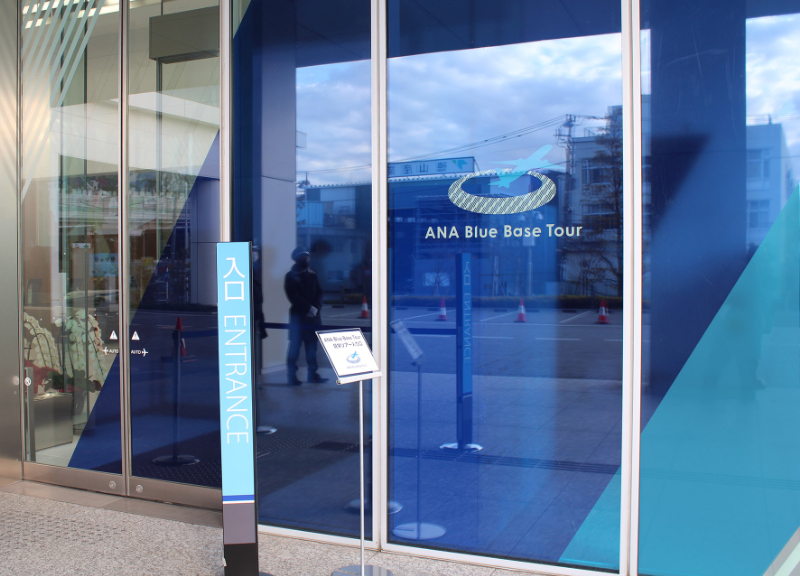 The beautiful blue entrance for the tour.
The beautiful blue entrance for the tour.
We went in from the special entrance for the tour. A temperature check and using a hand sanitizer is required upon entering. Due to countermeasures related to COVID-19, the tour currently takes place three times a day with a maximum of 10 people per tour.
(Tours may be unavailable on some days.)
Let’s check in - Entrance area
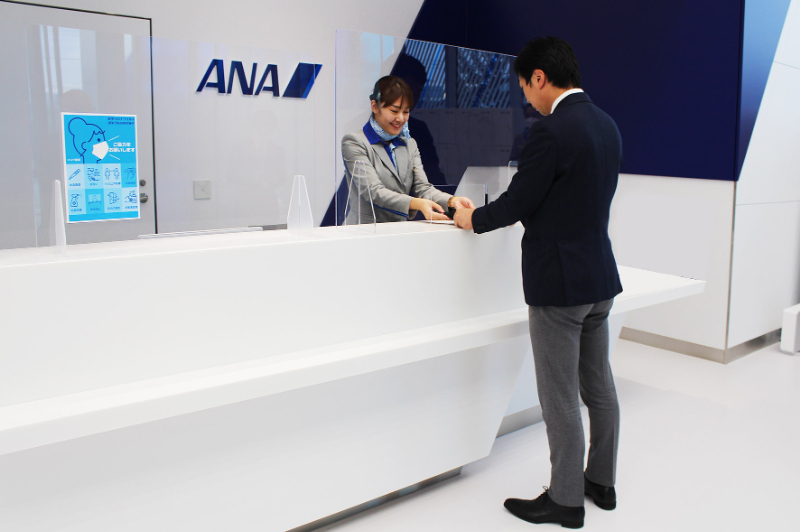 We checked in at the airport-like counter.
We checked in at the airport-like counter.
Check-in should be finished 10 minutes prior to the tour’s start time. You can actually enter the building 30 minutes prior to the tour’s start time. The waiting area has a lot to offer, so checking in a little early is recommended.
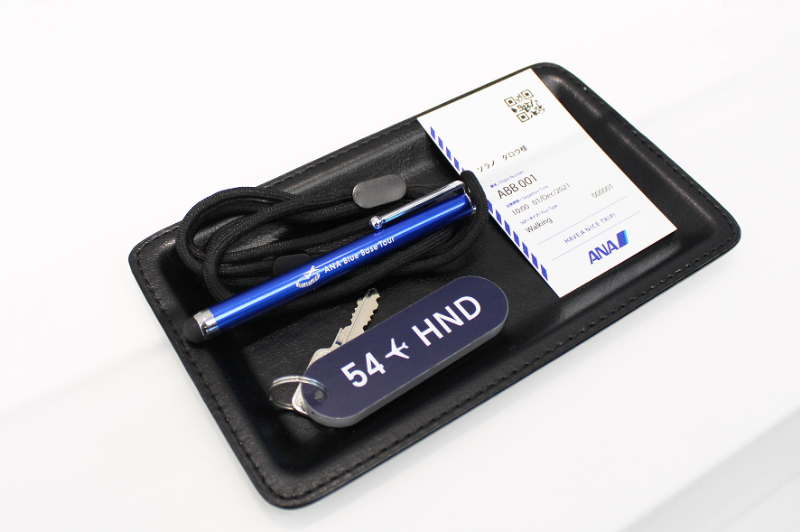 The admission ticket, locker key, and stylus given at check-in. The motif of the admission ticket is an airline ticket.
The admission ticket, locker key, and stylus given at check-in. The motif of the admission ticket is an airline ticket.
During the tour, you can use this stylus on exhibits that require screen operation and take it home as a souvenir after the tour.
The locker key has not only a number on it, but also some kind of alphabet. We wonder...
Airline industry term 1: IATA 3-letter code
The alphabet written on the key ring of the locker key is an IATA 3-letter code that represents the airport name. Each airport in the world has a unique alphabetic code to represent it. You may know this already because it is printed in large letters on your baggage tags when you travel by air . The IATA 3-letter code for Haneda Airport (Tokyo International Airport) is HND.
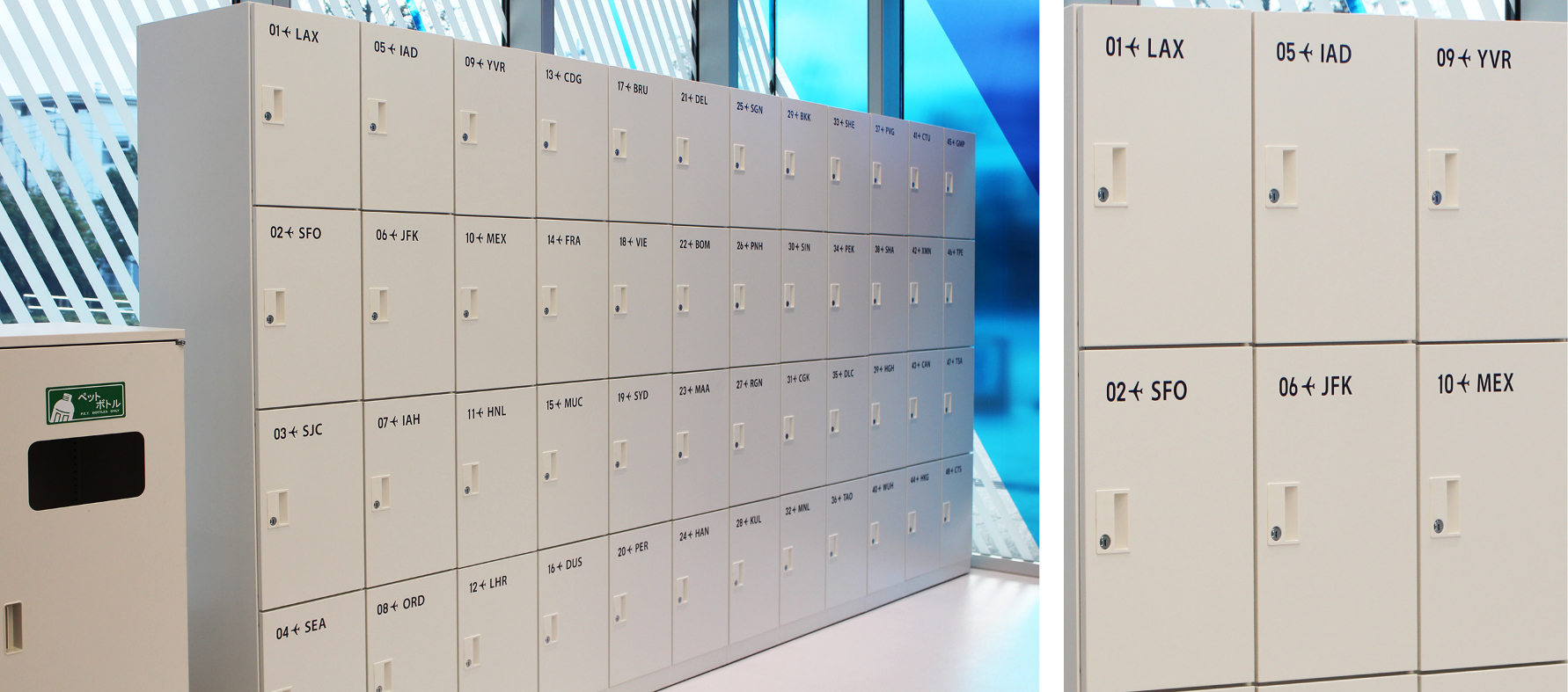 The lockers have IATA 3-letter codes such as LAX (Los Angeles) or SFO (San Francisco) printed on them.
The lockers have IATA 3-letter codes such as LAX (Los Angeles) or SFO (San Francisco) printed on them.
No luggage is allowed in the dedicated viewing area, so please leave your luggage in the lockers. However, you can take your smartphone and camera, so do not forget to take them with you. Photos are not allowed in the training area, but you can take commemorative photos at the Experience ANA at the end of the tour.
Preliminary study of ANA’s history and the work of airport staff - Lounge 1
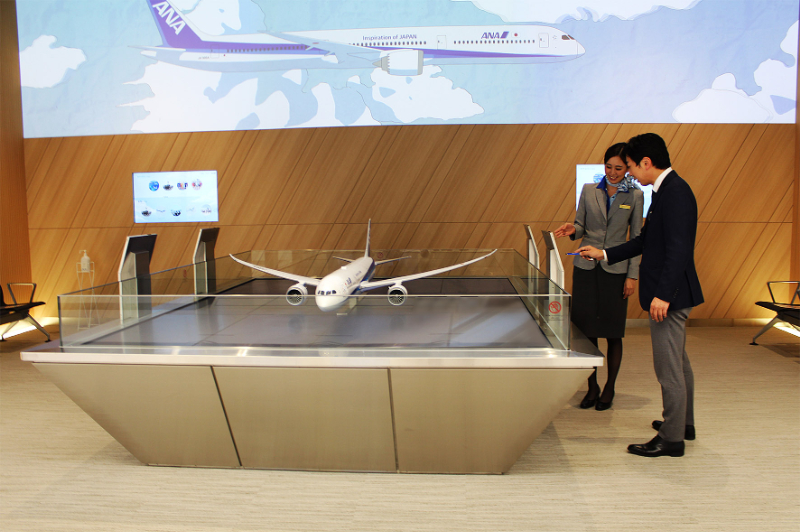
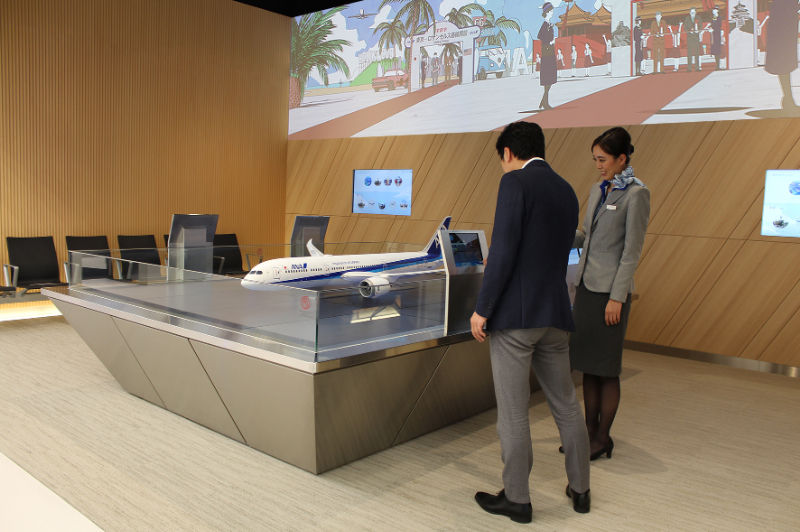 The front wall is a screen where you can watch an animation that shows the history of ANA, the aircrafts ANA has owned, and the changes in the uniforms of the cabin crews.
The front wall is a screen where you can watch an animation that shows the history of ANA, the aircrafts ANA has owned, and the changes in the uniforms of the cabin crews.
At the lounge, which is a waiting area until the tour starts, you can learn about ANA’s history and the work of the airport staff.
Underneath a 1/30th scale model of a Boeing 787 is a screen with a view of an airplane going through departure. When you operate the screen with a stylus, you can see what kind of work is being done where, with the timing of the view under the plane.
Try on their uniform at the AR photo spot! - Lounge 2
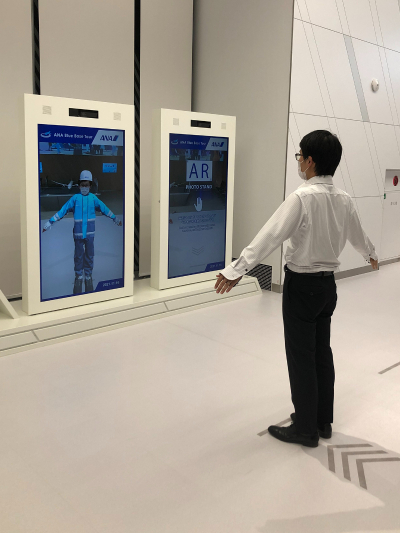
With the augmented reality (AR) technology, you can digitally wear the uniforms of the flight crew and cabin crew that you will see on the tour without having to change your clothes.
Check out the popular goods here and buy them online
ANA Blue Base SHOP - Lounge 3
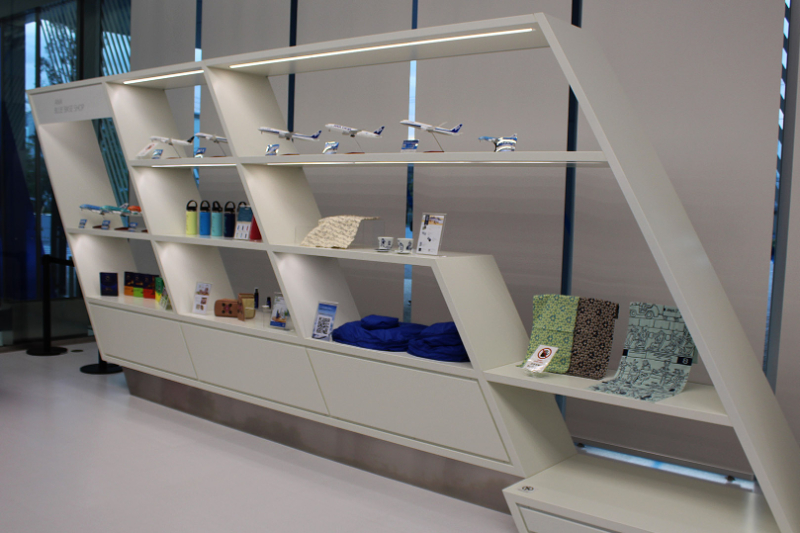
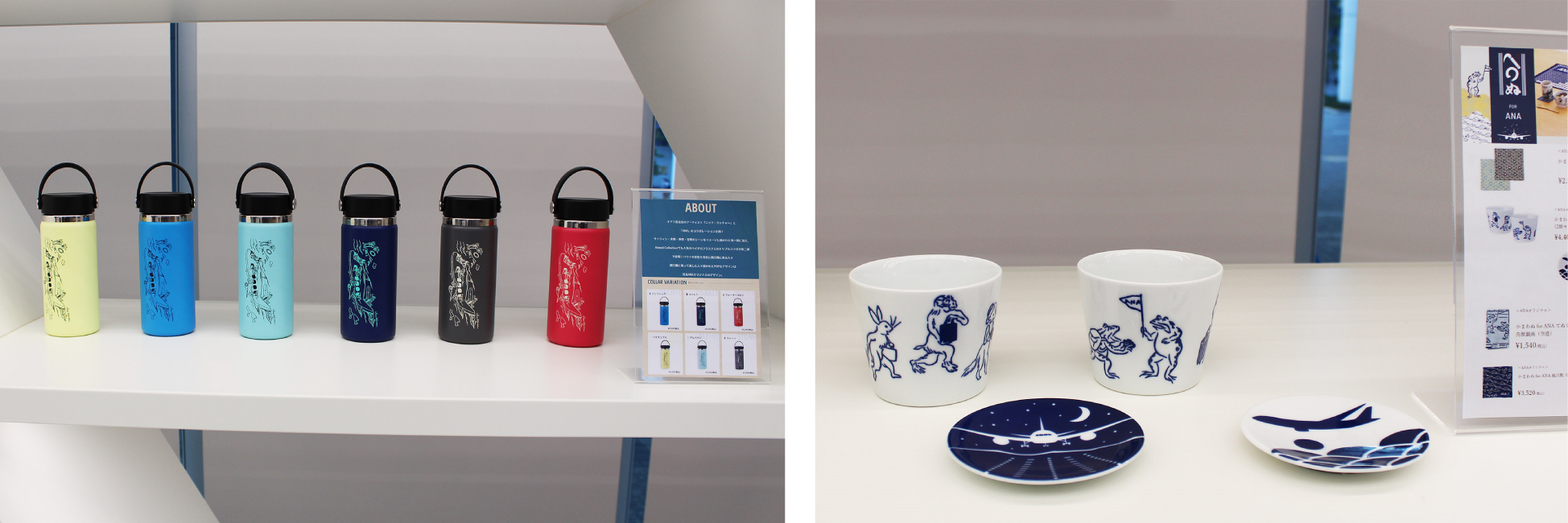
Although there are no ABB-exclusive products, there is an array of popular goods sold by the ANA Group, including model planes, sea turtle painted FLYING HONU model planes, tumblers, and original hand towels. These are only on display here, so you will have to buy them online.
Let’s start the tour! - Departure gate 1
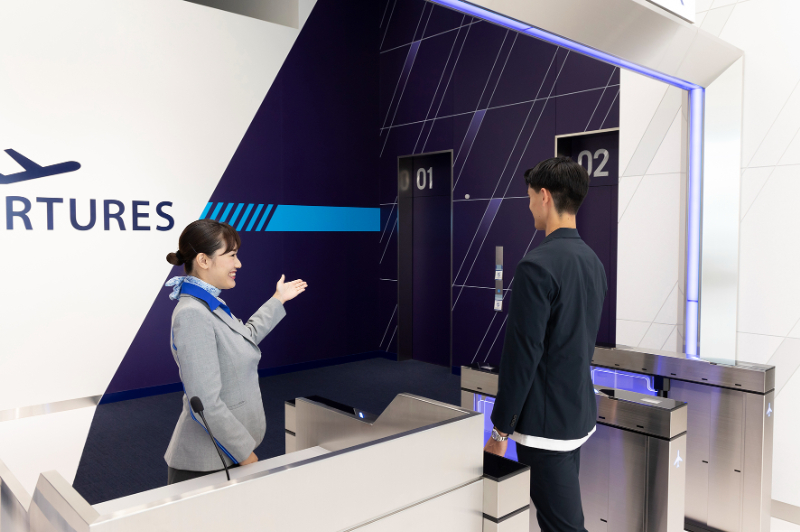
When the departure announcement is made, hold your ticket over the ticket gate and you’re off on your tour.
Airline industry term 2: IATA airline code
Flight numbers are usually preceded by a two-letter airline code: NH for ANA (e.g., Flight NH111). The code is derived from the fact that ANA started out as a company called Japan Helicopter & Aeroplane Transport Co Ltd. A helicopter that was active at the time of ANA’s founding, which can be said to be the origin of ANA, is preserved here. You can catch a glimpse of it during the tour.
On to the third floor by the elevator - Departure gate 2
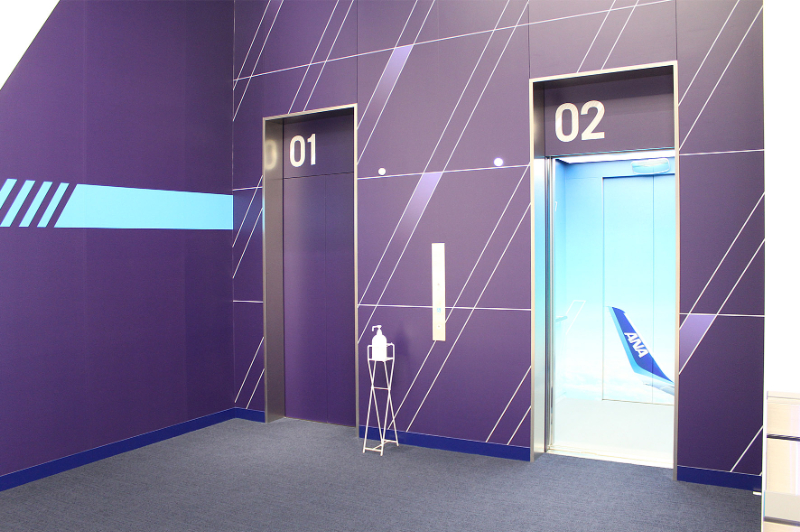
Inside the elevator is a drawing of an airplane that has reached cruising altitude, and the color of the sky seen through the window of the plane as it exits above the clouds is reproduced.
Before moving on to the dedicated viewing area...
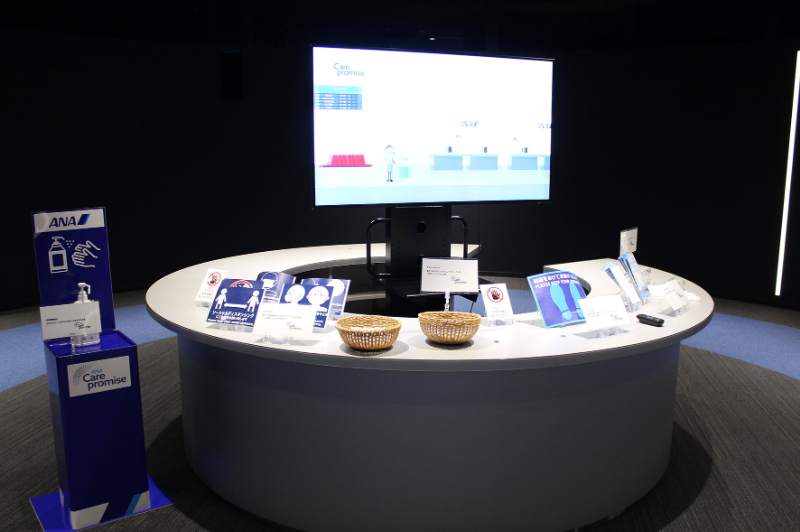
At the beginning of the tour, you will be given an overview of ABB’s facilities and tour contents at the Tour Base theater, and then visit the ANA Care Promise Station where you can learn about the ANA Group’s efforts to prevent the spread of COVID-19.
Dedicated viewing area overlooking the training from the third floor
Let’s move on to the area where you can observe the real training. From the third floor, you can overlook the areas where the six different professions that work for the airline are trained: ground staff, cabin crew, cargo staff, ground handling staff, mechanics, and flight crew.
Thanks to the ingenious display panels and explanatory videos, you can get a clear picture of the work and training of each profession. If you have any questions, you can ask the navigator. It will open a door to a conversation, making the tour more enjoyable. This is a great opportunity to talk to the navigator.
Airline industry term 3: Mock-up
This is not necessarily an airline industry term, but you will frequently see or hear the term “-- mock-up” at the training facility. A mock-up is a full-scale model, which is an indispensable piece of equipment for realistic training.
Ground staff
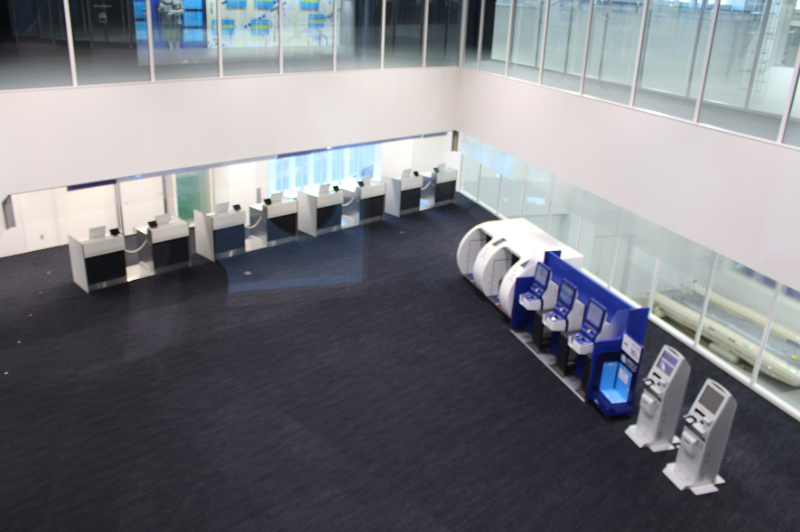
SPECIA, a training facility for ground staff, recreates the same environment as an airport. They have terminals that are actually used at the airport, so even airline tickets can be issued here, surprisingly!
In the training of ground staff, not only are normal duties such as check-in procedures seen as important, but also customer service skills such as language and behavior are emphasized.
Cabin crew
1. Emergency water landing training pool
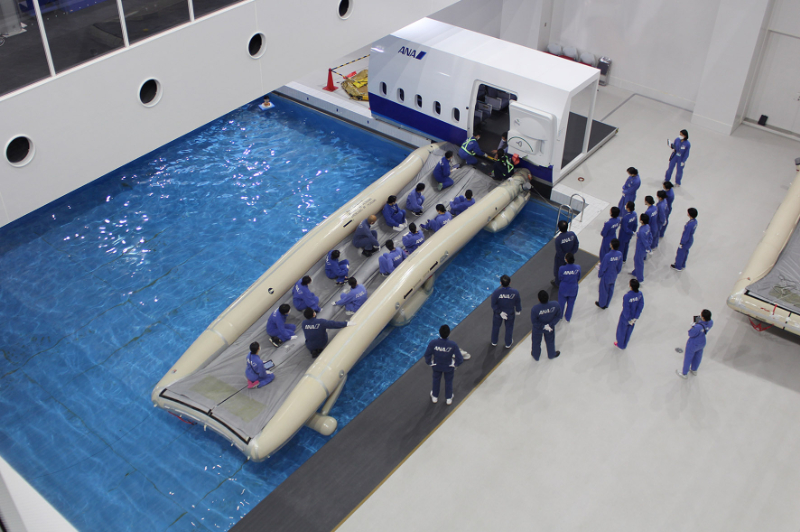
At the time of our visit, an emergency water landing training was taking place in the pool. One by one, the employees in training were getting on the evacuation slide floating on the water. Since this was a joint training for two professions, cabin crew as well as flight crew members were undergoing the training. The slide, on which they slide down during emergency landings, is used as a raft when landing at sea, so they were learning the detachment operation after sliding down.
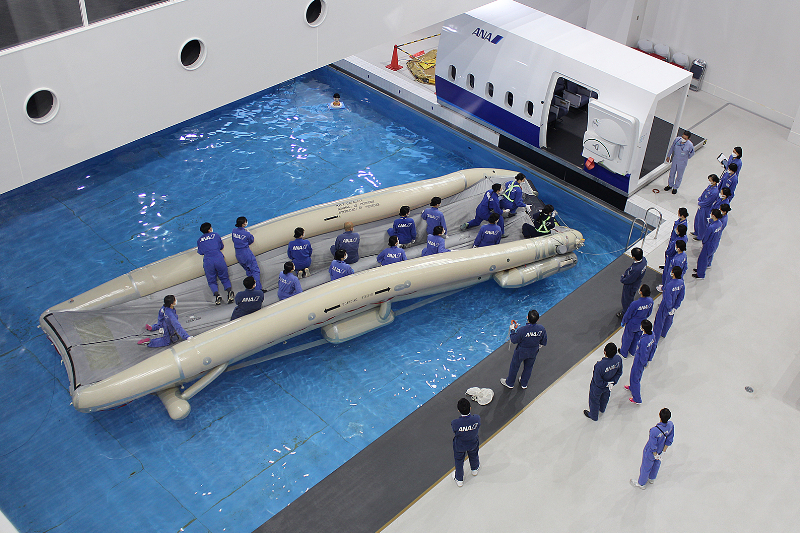 2. This is the first-ever motion mock-up in Japan!
2. This is the first-ever motion mock-up in Japan!
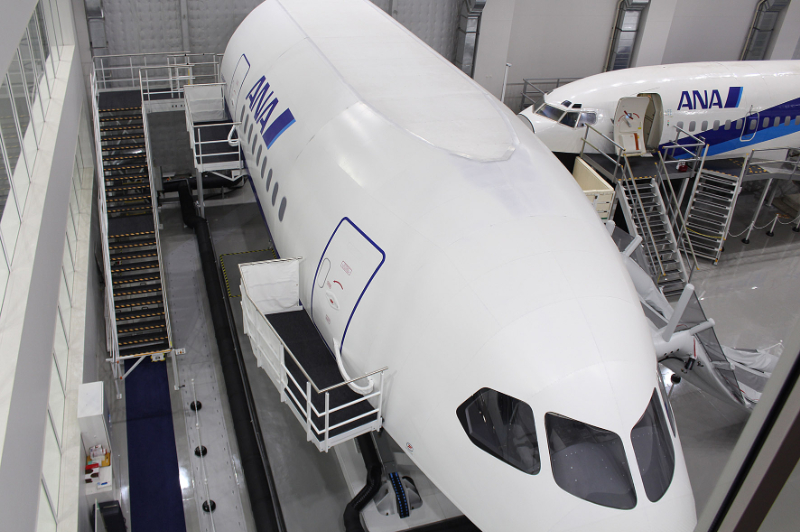
This is the first motion mock-up introduced in Japan that can realistically reproduce the feeling of turbulence to a plane in the sky. We didn’t see it moving during our visit, but according to the navigator, it shakes quite violently.
Cargo staff and ground handling staff
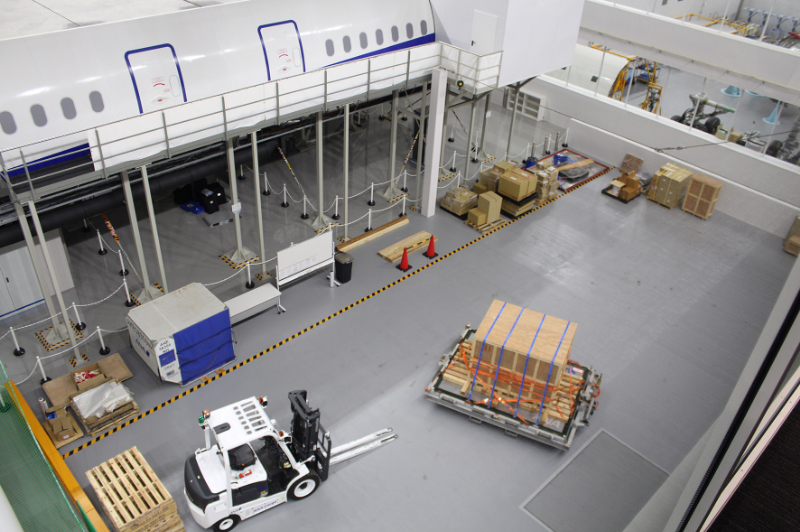
Cargo staff’s most important mission is to handle cargo safely and securely, and ground handling staff support safe flight operations by guiding planes, loading and unloading cargo, and performing other arrival and departure duties around the plane.
Here, training to handle pallets used for transporting cargo with forklifts and to learn techniques for efficiently loading cargo of different shapes will be performed. We say that it “will be” because the training has yet to be started and will commence sometime in 2022.
Mechanics
The real engines!
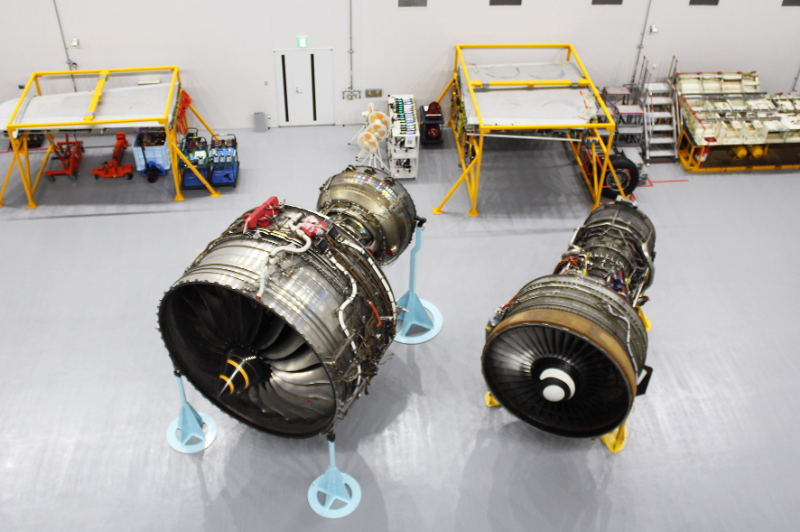 Left photo: A real engine from a Boeing 787 / Right photo: A real engine from a Boeing 767
Left photo: A real engine from a Boeing 787 / Right photo: A real engine from a Boeing 767
This is the Maintenance Training Mock-up, a training facility for mechanics with large pieces of equipment. These are the engines!
In the case of mechanics, training new employees is the main focus at the ABB. Everything down to the basics of maintenance work such as tightening screws is performed using the real materials.
Mistakes on an actual plane are never acceptable, which is why it is an important experience to be able to see the consequences of a single mistake. It is only at a dedicated facility that one can learn to anticipate mistakes.
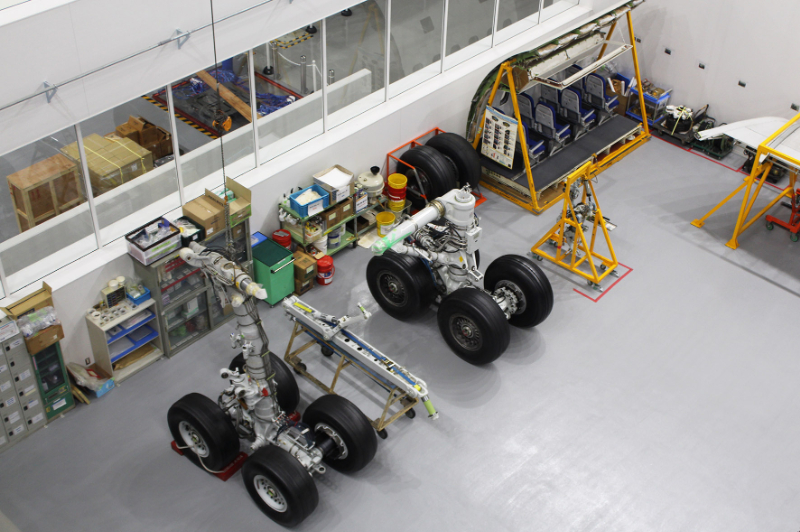
In addition to the engines, there are also tires, dissected wings, and a part of the cabin with windows and seats.
Flight crew
1. Powerful full-flight simulators
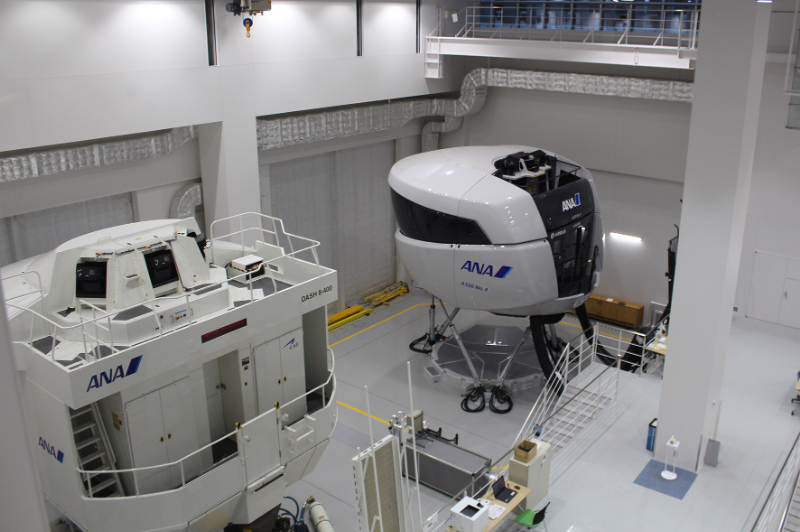
This is a training area for flight crew with three full-flight simulators. At the time of our visit, a training session was just underway, and the simulators were moving in sweeping vertical and horizontal motions.
2. Feel the training of a pilot - Flight simulation
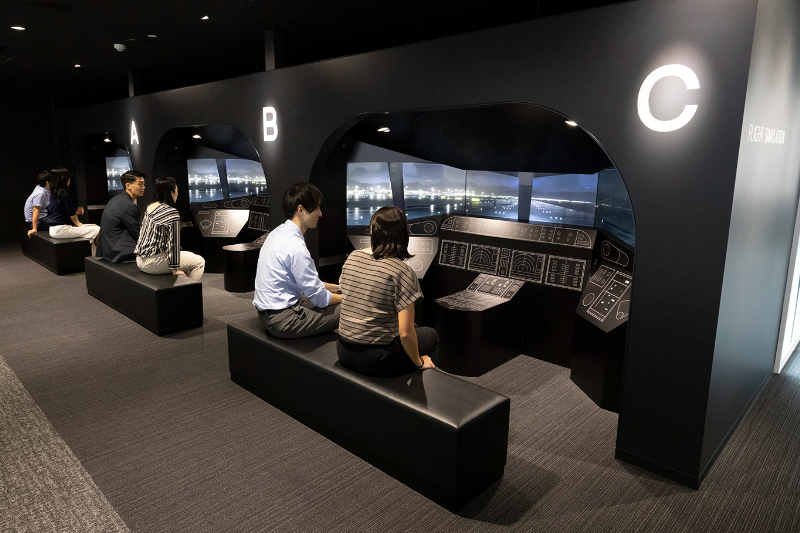
You can experience part of a pilot’s training, such as the communication between the cockpit and the ground via radio, and simulated images of bad weather conditions.
Airline industry term 4: Cockpit
A pilot’s workplace, where their seat on an airplane is located, is called a cockpit. It is also referred to as a flight deck.
The tour took us deeper and deeper along one long corridor. When we finished the tour of the flight crew training area at the far end of the corridor, we made a U-turn and went back along the same hallway, but we saw a training session taking place in an area that was empty when we passed it the first time, and we also had a lively conversation with the navigator. It was not just a return trip, but a return trip with different discoveries.
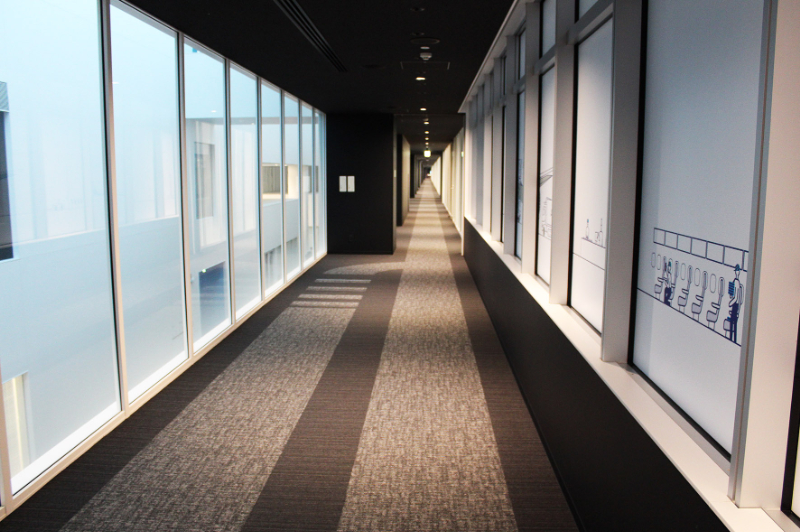
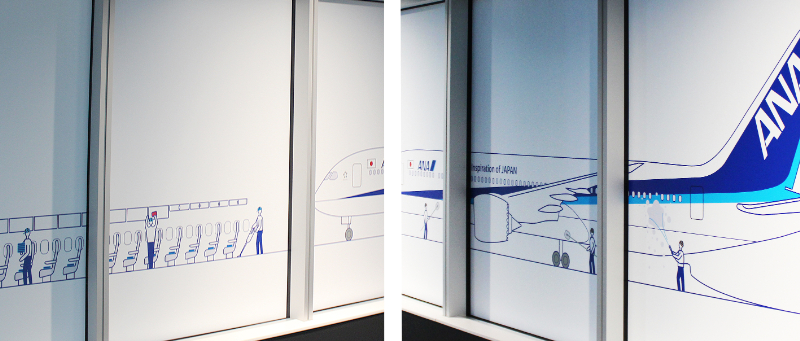 Throughout the tour course, there are illustrations of people working at ANA with a warm touch.
Throughout the tour course, there are illustrations of people working at ANA with a warm touch.
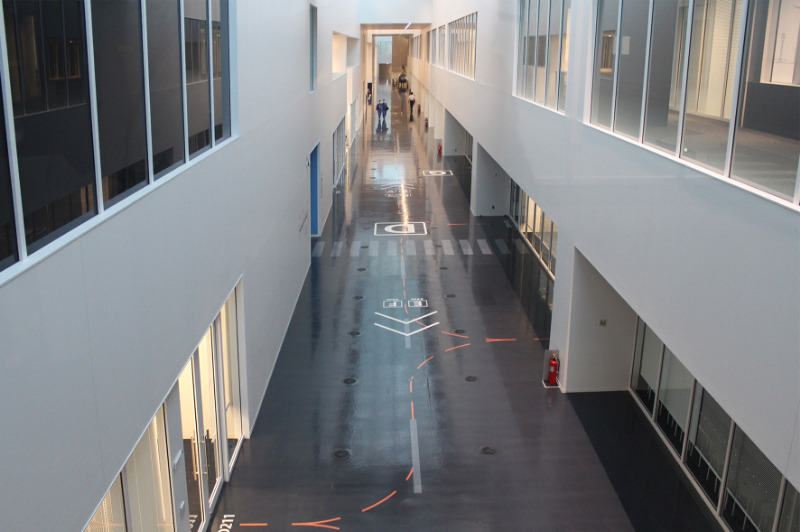
The middle of the building is an atrium, overlooking the long corridor (250m) on the first floor. It looks like a runway and is very cool!
Commemorative photo at the Experience ANA section
After observing the training area, we moved to the Experience ANA section where we could take commemorative photos at the end. You can see real equipment and aircraft parts, a check-in counter, a tire, business class seats, a cockpit mock-up, and a control panel for the passenger boarding bridge that visitors can actually play with.
Touch panels explaining the work of each profession are also available here, so you can review the knowledge you learned during the tour.
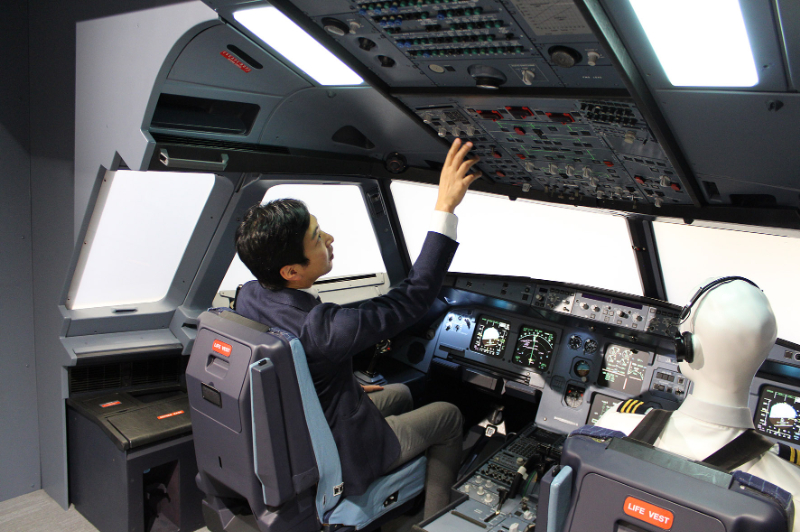
There are so many buttons and switches in the cockpit! You can push and pull these controls.
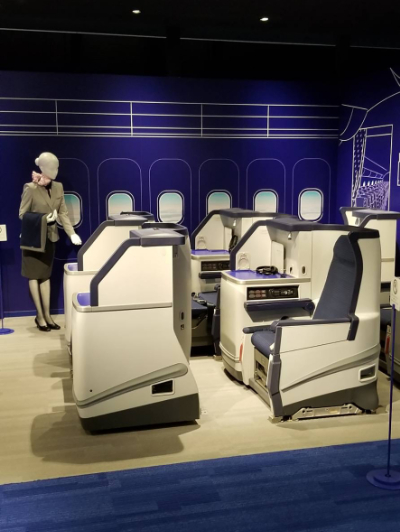
You can experience the comfort of a business class seat.
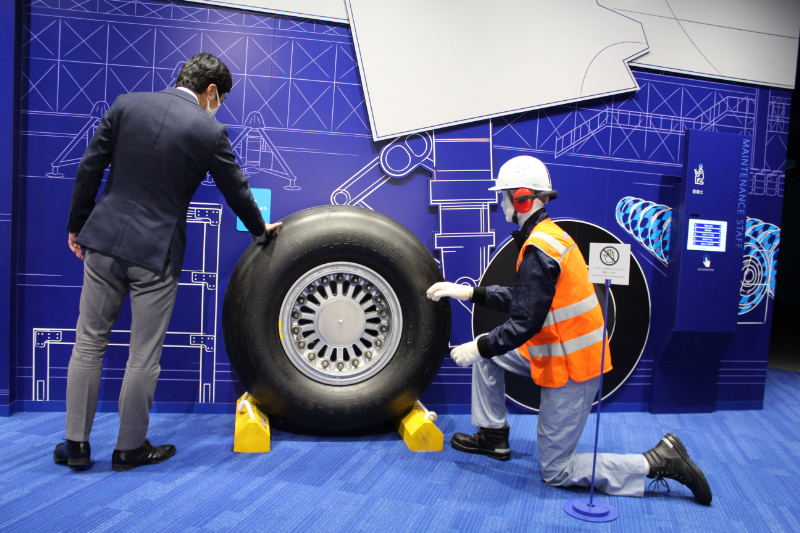
Airplane tires work under extreme conditions of weight, speed, and impact. When we actually touched one, it was very hard! Compared to tires for passenger cars, they are quite sturdy.
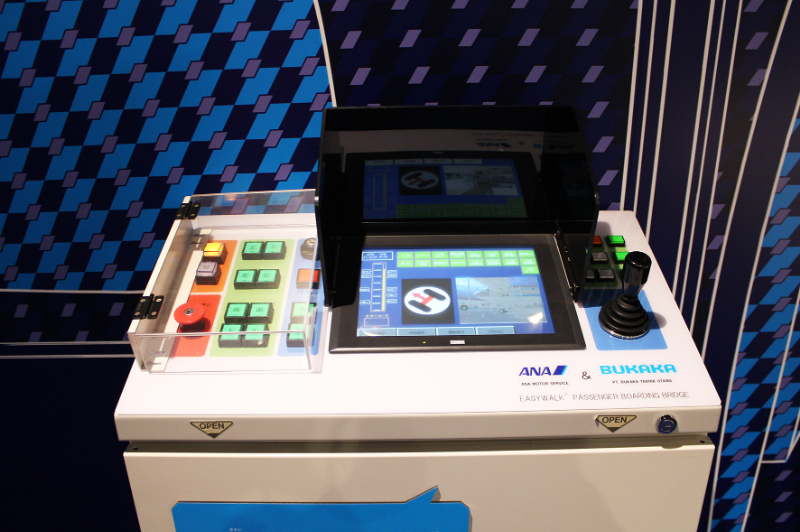
The control panel of the passenger boarding bridge is a connoisseur’s favorite. The feeling of operating the machine was great.
Concluding the tour - ANA and beyond
The ending video is played in a theater surrounded by screens.
The 90 minutes really flew by!
Interview with ANA staff
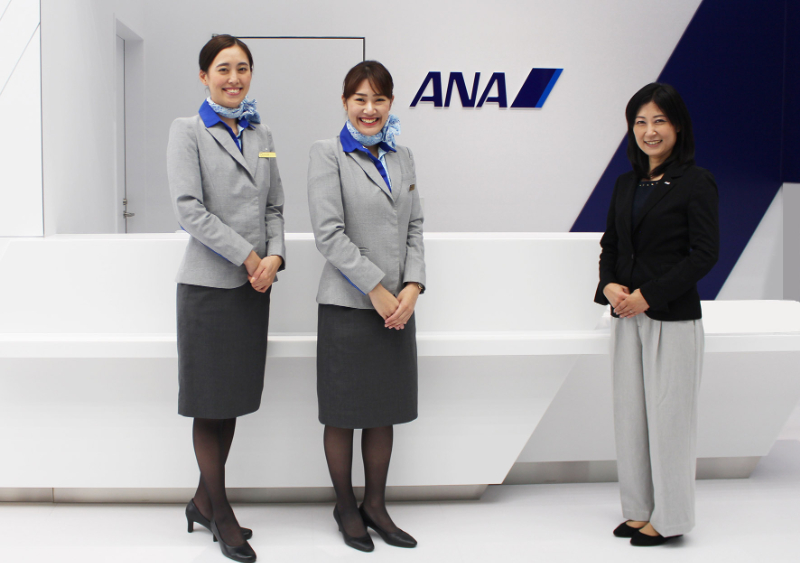 Ms. Kaori Hitaka (right) from the Corporate Communications and Branding Department, ANA Holdings, Inc., Ms. Shimako Murakami (left), and Ms. Yuka Kinoshita (center), navigators belonging to the same department
Ms. Kaori Hitaka (right) from the Corporate Communications and Branding Department, ANA Holdings, Inc., Ms. Shimako Murakami (left), and Ms. Yuka Kinoshita (center), navigators belonging to the same department
After the tour, we spoke with Ms. Kaori Hitaka from the Corporate Communications and Branding Department, ANA Holdings, Inc.
— Could you tell us about the concept of the ABB tour?
The concept of the ABB tour is
“Introduce training facilities through the active employees of the ANA Group! See and learn what goes on behind the scenes of making air travel safe and secure, and then fly!”
For ANA, who are involved in the air transportation business, safety is the foundation of our management. We hope that you will experience the spirit of the ANA Group’s employees, who are committed to maintaining safety and further improving service and quality under our motto of “Anshin (peace of mind), Attaka (heartwarming), and Akaruku-genki (cheerful and energetic).” We would like you to board ANA flights with greater peace of mind afterwards.
— What is the appeal of the tour?
This is the first time for airlines in Japan to show the training facilities and actual training for the six main professions at the airport all in one place. Various exhibits and videos are designed creatively to be enjoyed by everyone from small children to adults. We are sure that you will be able to feel the thoughts of each profession that are put into each exhibit. The ABB tour’s appeal is the fact that it is not just a tour to see things, but an opportunity to learn about ANA’s history and much more.
One of the most attractive features of the tour is that it is guided by an active ANA Group employee (navigator). We hope that you will enjoy communicating with the navigator as you visit and experience the tour. The ABB tour is a valuable opportunity for our employees to hear the real voices of our customers, something that is usually difficult for us to do. We would like to conduct our tours with a focus on mutual communication with our customers, rather than one-way communication from us.
— What kind of feedback have you received from employees who are undergoing serious training but at the same time are in the position of being “watched”?
Here is some of the feedback we received from the employees.
“I hope that seeing our ANA Group employees earnestly learning and working on training will help our customers feel more secure about flying. Being watched makes me understand the seriousness of my training.”
“I hope that many children and students will come to learn about the airline industry and ANA and come to love ANA so that in the future they might want to become ANA Group employees.”
These are just some of the comments from employees who have received their training at ABB, but many of them share the same sentiments, regardless of their professions.
We would like our customers to see not only the superficial image of the company but also what is going on inside and what the employees are actually doing. In particular, we would like to convey our approach to safety by explaining it in words as well as by letting the customers see what kind of efforts we are making and what kind of attitude we have toward these efforts, and we believe in valuing the tension that this creates.
There is nothing more pleasurable than to be able to help small children and students in some way for their future.
— Finally, could you give a message for those who have not experienced the ABB tour?
The ABB is one of the largest training facilities in Japan and is equipped with some of the world’s most advanced training equipment. We hope that you will be able to see what kind of training equipment is used by ANA Group employees on a daily basis and feel how we continue to strive for the safe operation of aircrafts and challenge the world and the future with our motto of “Anshin (peace of mind), Attaka (heartwarming), and Akaruku-genki (cheerful and energetic).”
In addition, the completion and operation of the ABB was made possible by the cooperation of Ota City and many of the local residents. We would like the community to see what our employees are doing at the ABB.
We hope that this ABB tour will be a new opportunity for us to meet our customers.
* Please see the official website for the latest information.
